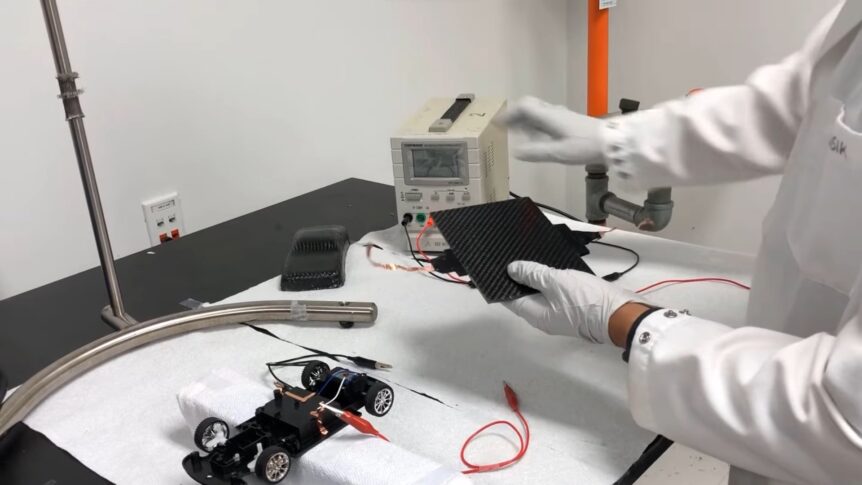Is it possible to combine the best features of batteries and supercapacitors to get both enduring energy storage and bursts of power? Batteries, to varying degrees can store energy and release it over time. Supercapacitors can provide instant, but short-lived power. Even more challenging, can can we form a hybrid structural battery, combining form with function? University of Central Florida researchers think they’ve answered those questions with a battery-supercapacitor hybrid material that could form “power suits” for electric vehicles. Improving on an Earlier Idea This blog first reported on structural batteries 12 years ago, examining the efforts of Volvo and Dr. Emile Greenhalgh of Imperial College London. Several approaches have been made to create a structural battery, but the “power suit” combines electrical potency with enough structural strength to resist driving impacts. UCF reports, “This new breakthrough continues this line of thinking, with scientists at University of Central Florida and NASA designing a new material featuring unique properties that allow for …
The Painted Battery
Dr. Yi Cui, assistant professor of materials science and engineering at Stanford University, is a battery scientist extraordinaire, and a presenter at last April’s Third Annual Electric Aircraft Symposium. His paper was well received, one in which he discussed how breakthroughs in his lab could lead to an 80-percent improvement in battery capacity for the same weight as current units. He has topped himself with an extraordinary approach to manufacturing batteries. Imagine painting an ordinary piece of paper with a coating of carbon nanotubes and silver nanowires, and ending up with a very thin battery or supercapacitor. This video, courtesy of Stanford University, shows that process, and includes Dr. Cui lighting an LED with a small square of paper. He and his colleagues have abused the battery, washing it with acid and crumbling it, but it still produces current. He notes that they haven’t tried burning it. Dr. Cui predicts that such batteries could be good for 40,000 cycles, a huge leap …

